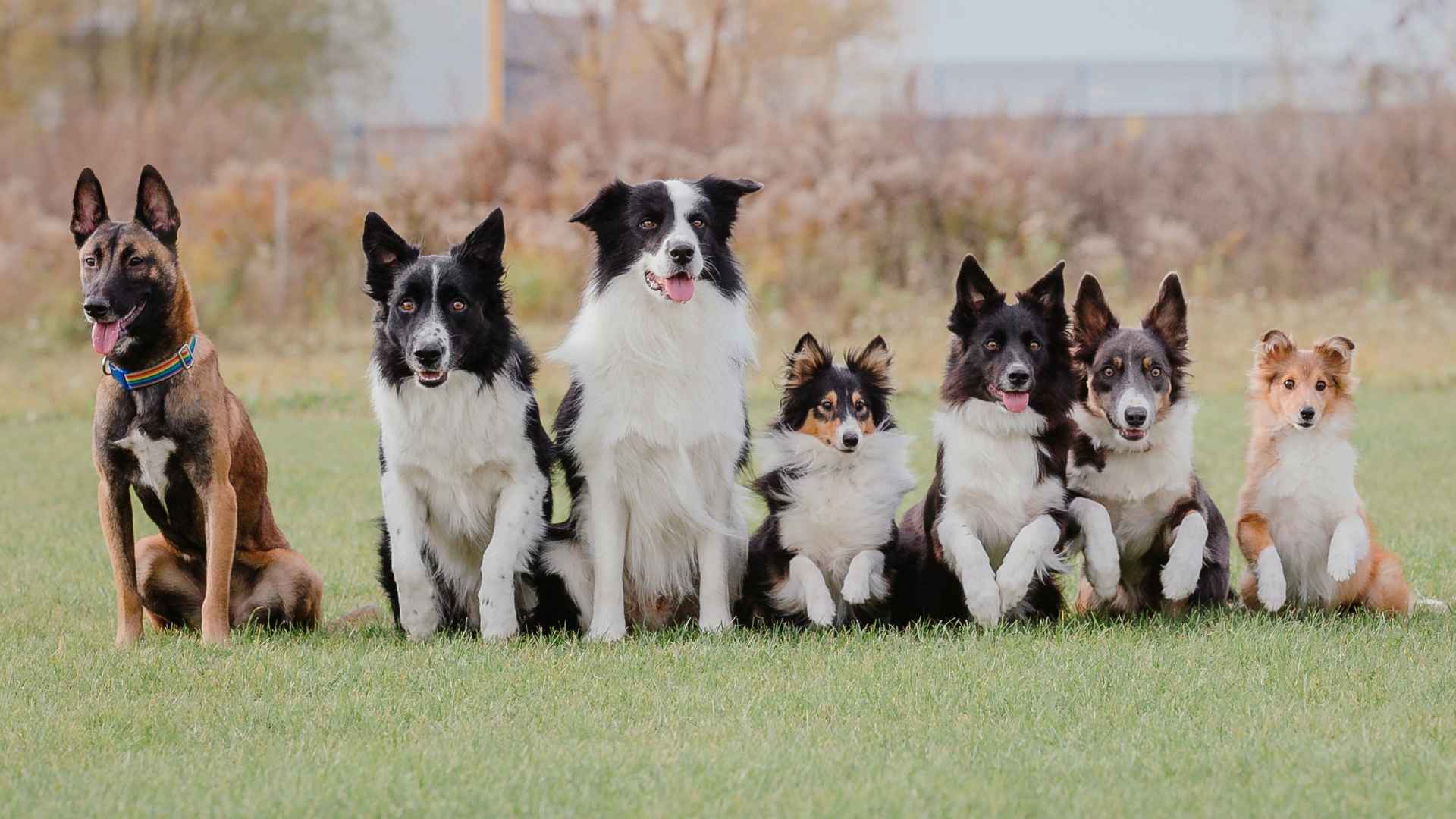Not all heroes wear capes—and not all dogs bark at the mailman. While some breeds were born to patrol perimeters or protect property, others have a very different calling: spreading joy, offering comfort, and winning hearts with a tail wag and a soulful gaze.
In today’s world, not everyone is looking for a canine bodyguard. Many are seeking a loyal buddy, a playful pet, or a four-legged friend who thrives on connection rather than confrontation. That’s where these dogs shine. They aren’t bred for aggression or alertness—they’re born to be companions, mood boosters, and family MVPs.
This article highlights seven exceptional breeds known for their non-guarding nature. Each one stands out not for how loud it barks but for how well it fits into daily life, offering steady companionship and zero drama.
Non-Guarding Dog Breeds
1. Labrador Retriever
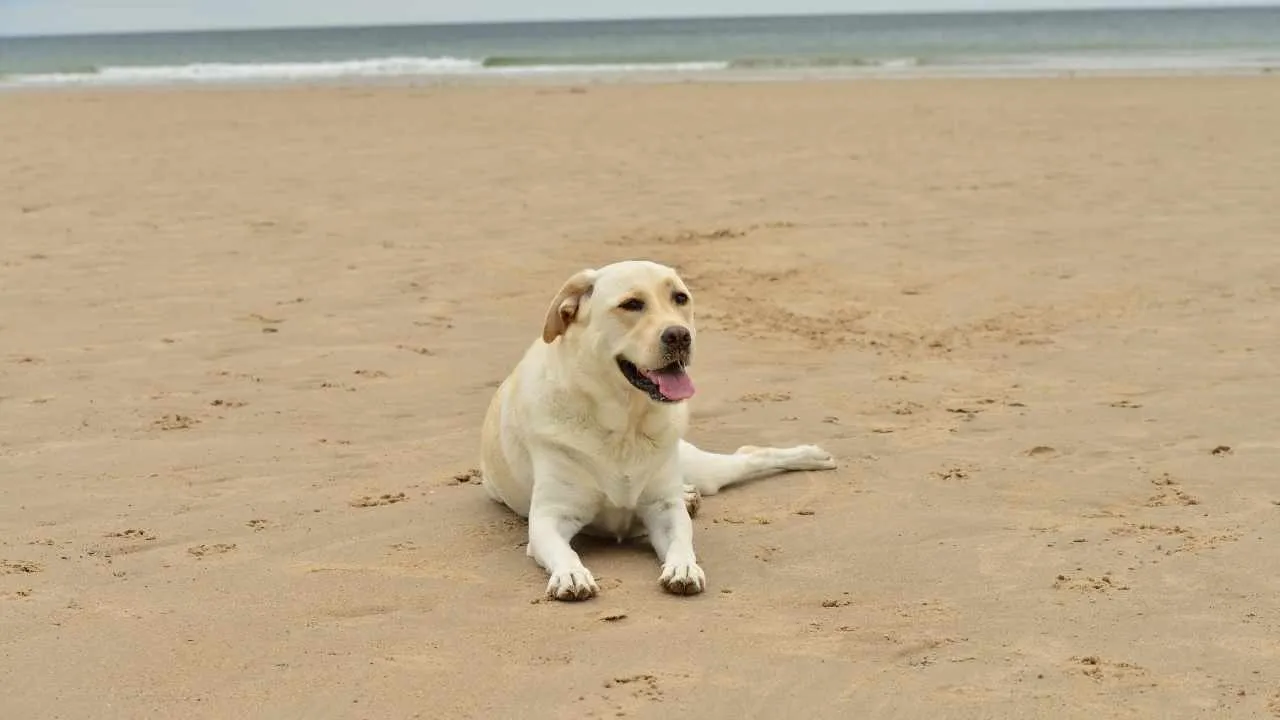
Labrador Retrievers are arguably the gold standard for family dogs, and not because they bark at strangers. They’re beloved for their trustworthiness and are rarely territorial, making them quintessential non-guarding companions. Their reputation for kindness and adaptability is unmatched across households, therapy settings, and even service dog work.
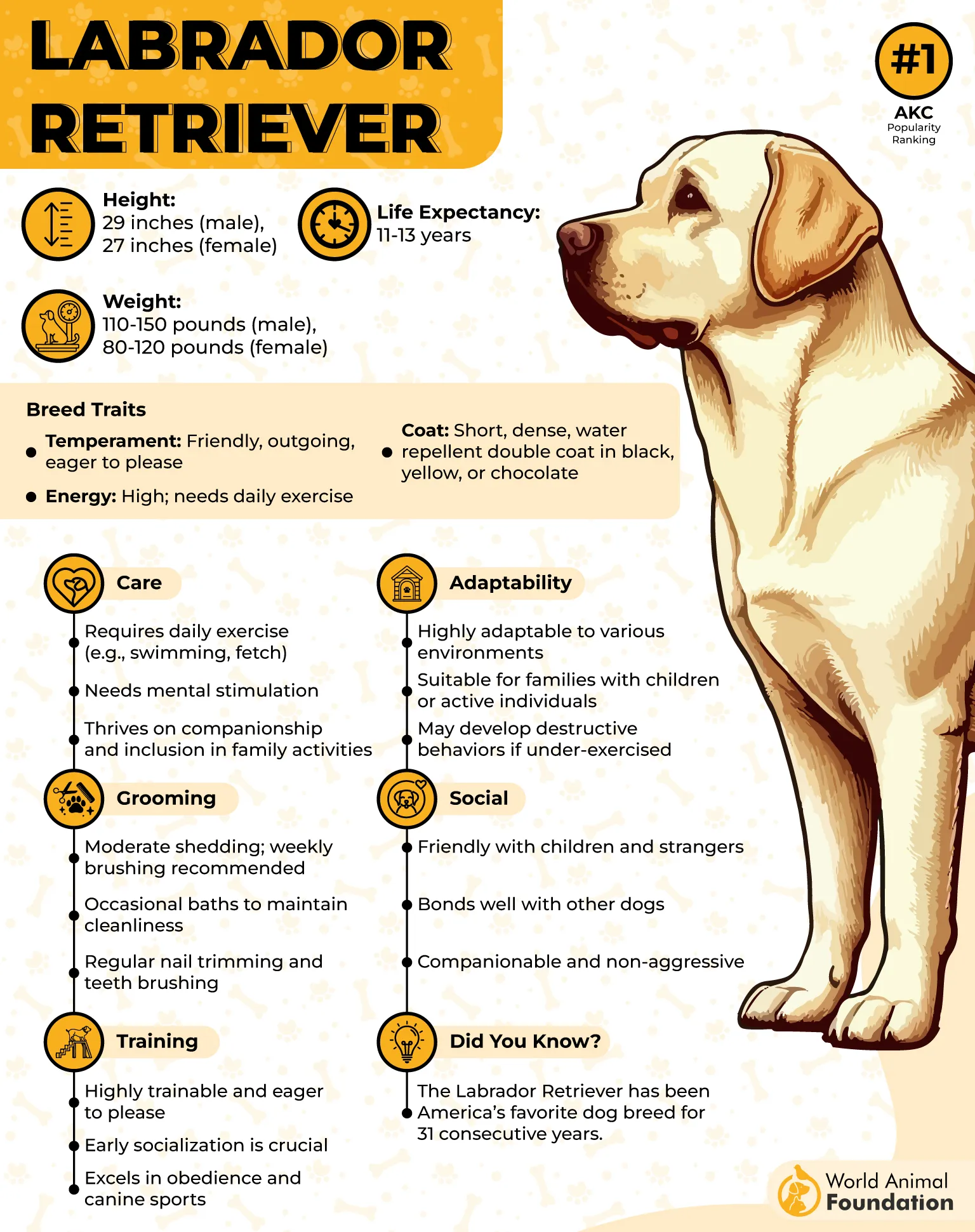
What makes Labs so uniquely effective in their role is their emotional intelligence. They seem to read moods with uncanny precision and adapt to the energy of a room. That’s why they excel in roles involving people—be it kids, seniors, or individuals with special needs. Labs offer a comforting presence more powerful than any growl.
Physically, their medium-large build and expressive eyes may give the illusion of alertness, but they are far too people-friendly to serve as protectors. Their tails wag more often than their hackles rise, and their muscular bodies are more suited to fetch than defense.

Training a Labrador is a breeze, and that’s part of their charm. Their eagerness to please makes them one of the easiest breeds to teach. Whether you’re showing them how to fetch a paper or support someone with anxiety, their learning curve is impressively short.
In terms of care, Labradors do best with regular exercise and a balanced diet. They shed seasonally and benefit from brushing, especially during spring and fall. Mental stimulation is equally important—puzzle toys, basic agility drills, and social time go a long way.
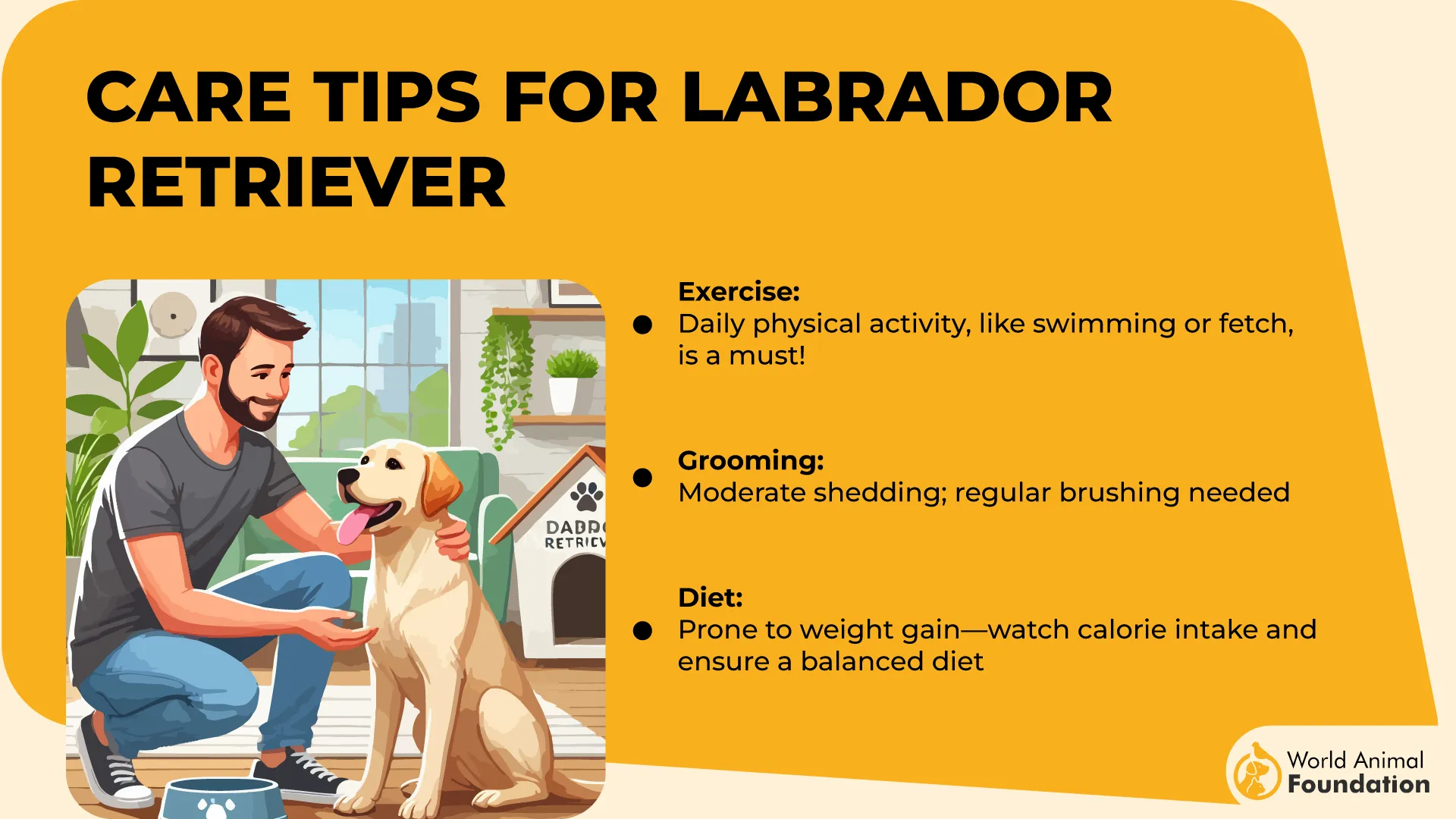
Fun Fact:
Labrador Retrievers have been the most popular dog breed in the United States for over three decades running.
2. Basset Hound
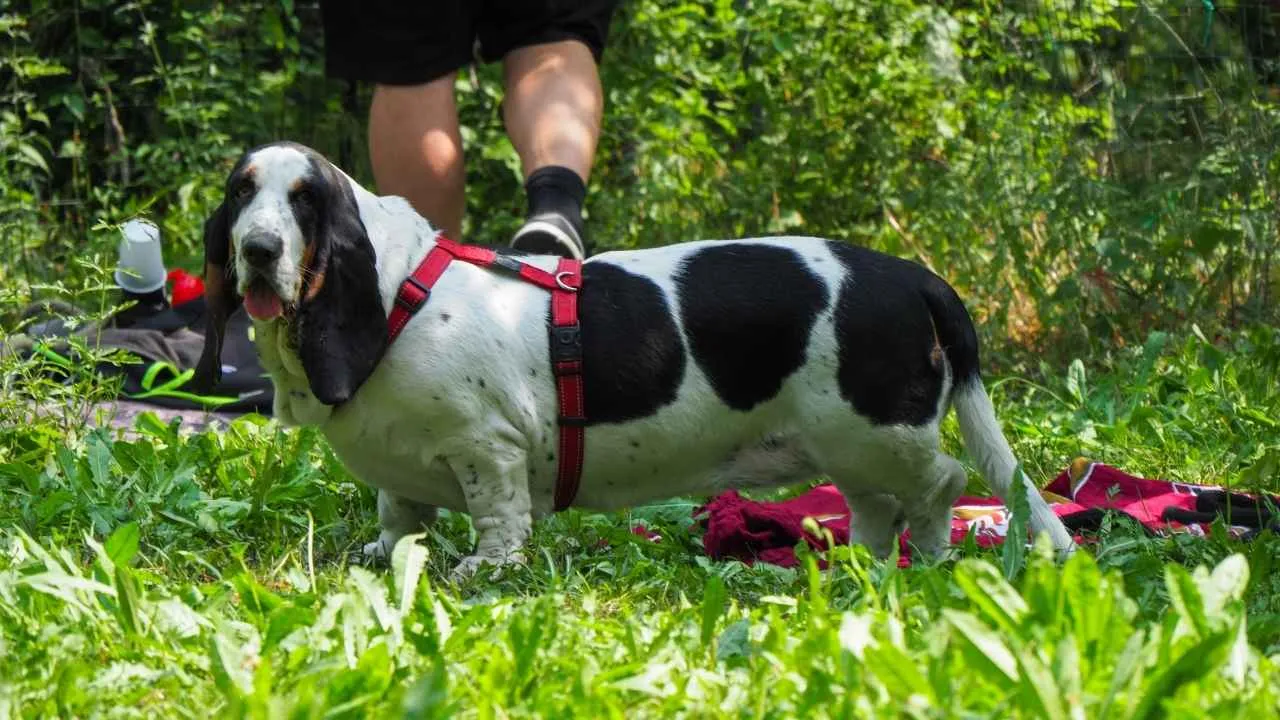
The Basset Hound may have a serious expression, but this breed is sweet, calm, and great at relaxing. They are not interested in guarding or barking at strangers. Instead, they love spending time with their family and are known for being easygoing and affectionate.
As per the AKC, what makes the Basset Hound special is its amazing sense of smell. They were bred to track scents on the ground, so their noses are strong, but their personality is soft. They are curious dogs that enjoy sniffing around more than chasing or protecting.
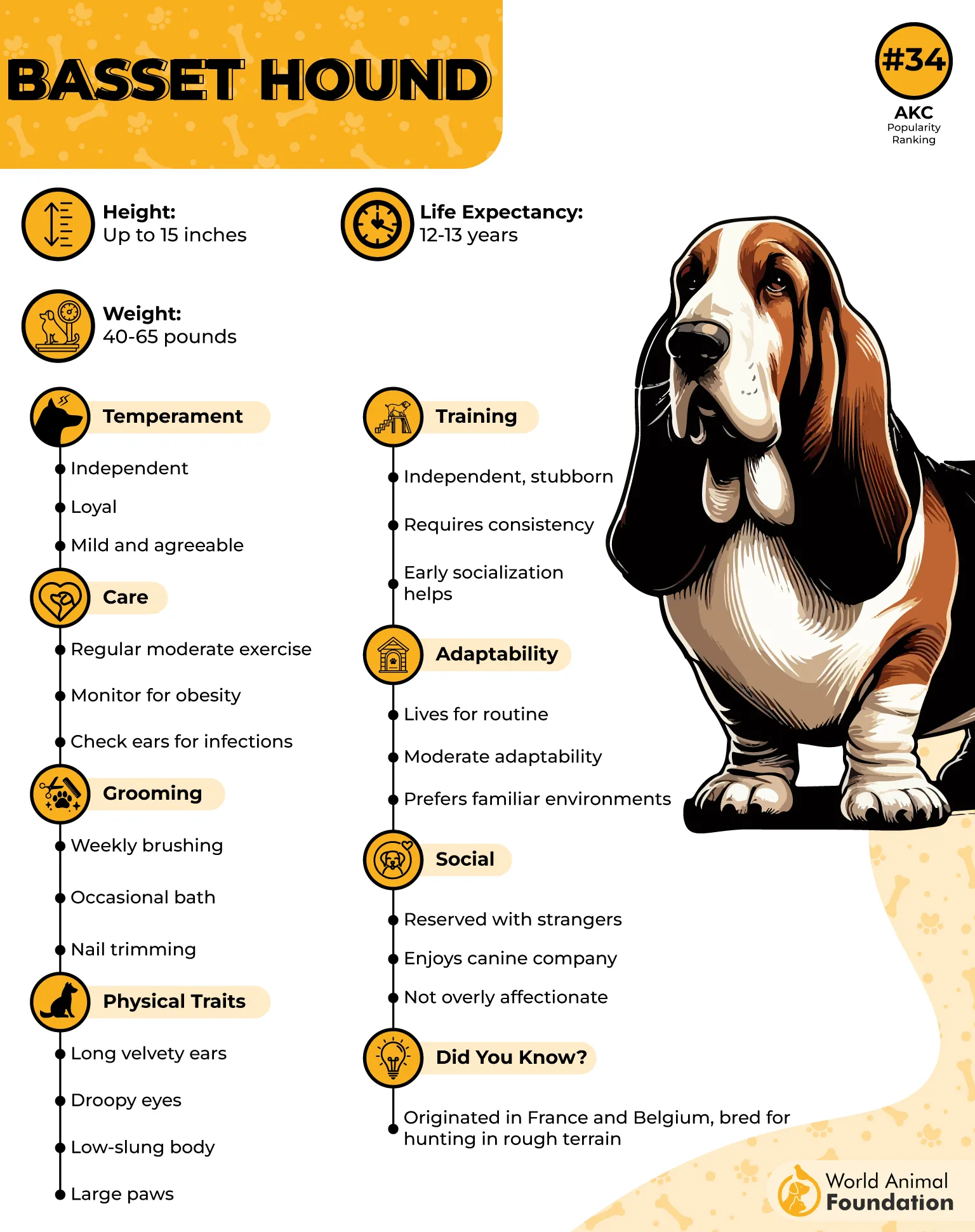
Basset Hounds have a unique look. Their short legs, long ears, and droopy eyes make them stand out. Their slow movements and relaxed style make them great for families with children or older adults.
They can be a bit stubborn when it comes to training, but with patience and rewards, they will learn. It helps to keep sessions short and fun, especially when they involve scent-based games or treats.
These dogs enjoy a predictable routine. They like short walks, cozy resting spots, and a calm environment. Their long ears can trap dirt easily, so regular cleaning is important for their health.
Although they have a deep bark, they rarely use it for guarding. They’re more likely to nap through the day than sound an alarm. Basset Hounds make peaceful and dependable companions.
Fun Fact:
A Basset Hound’s long ears help sweep scents toward its nose, making it easier for them to track smells.
3. Old English Sheepdog
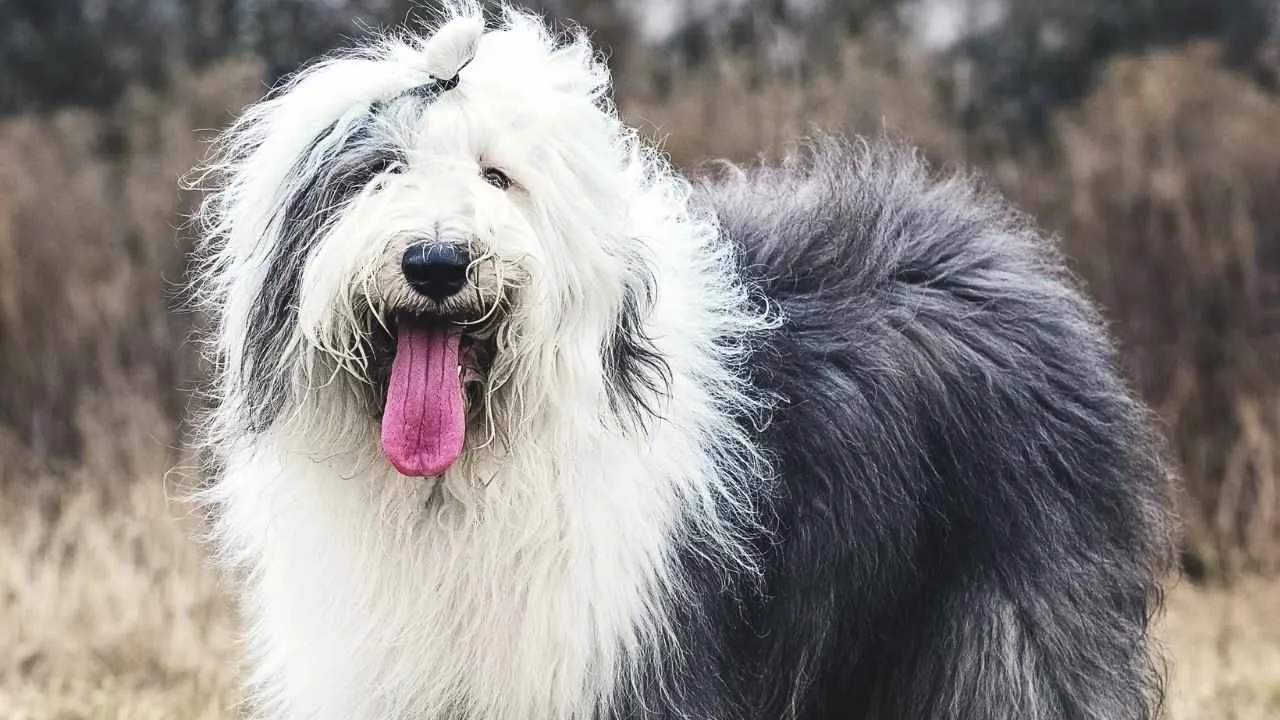
At first glance, the Old English Sheepdog might look big and tough, but it’s one of the most gentle dogs around. With their fluffy coats and cheerful attitude, they are known more for their friendly nature than any guarding instinct.
These dogs are very loyal and love being around their people. They enjoy playing, being part of family activities, and following you from room to room. Their fun, upbeat personality makes them great for homes with kids or active adults.
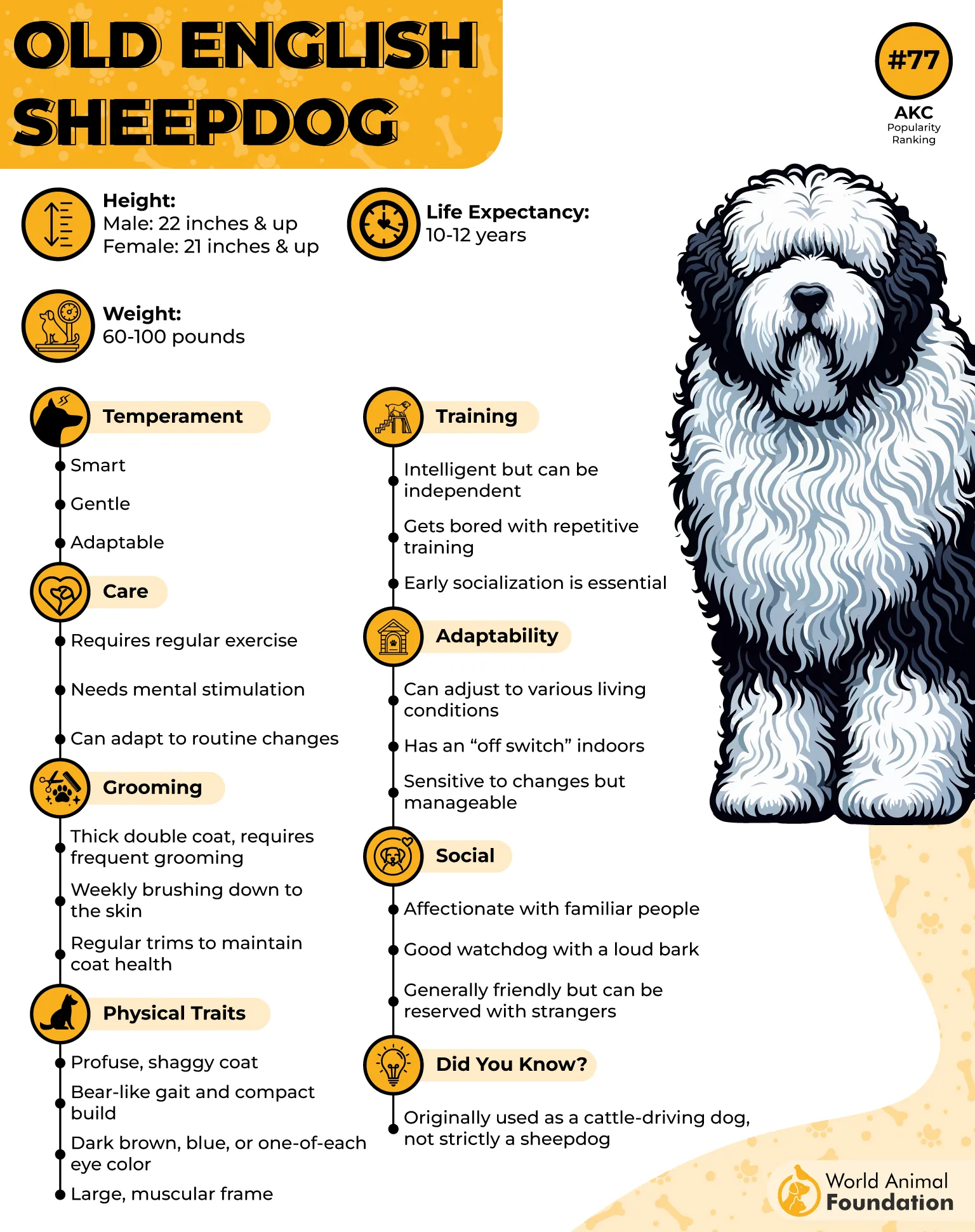
Although they are large and strong, they are not aggressive. Their thick, shaggy fur covers much of their face, adding to their soft look. Instead of guarding, they may try to gently herd people, especially children, since that’s what they were originally bred to do.
They are smart dogs who respond well to consistent training. Teaching them basic commands and games keeps them focused and happy. Their natural herding skills can also be shaped into fun activities like agility or obedience training.
Grooming is a big part of caring for an Old English Sheepdog. Their long coat needs brushing several times a week to stay clean and untangled. They also need regular exercise and social time to avoid getting bored or restless.
They might have a loud bark, but they don’t use it to scare anyone off. These dogs are more about bonding with their people than watching over the house.
Fun Fact:
The Old English Sheepdog’s walk is so unique that it’s called a “bear-like shuffle” because of its rolling motion.
4. English Bulldog
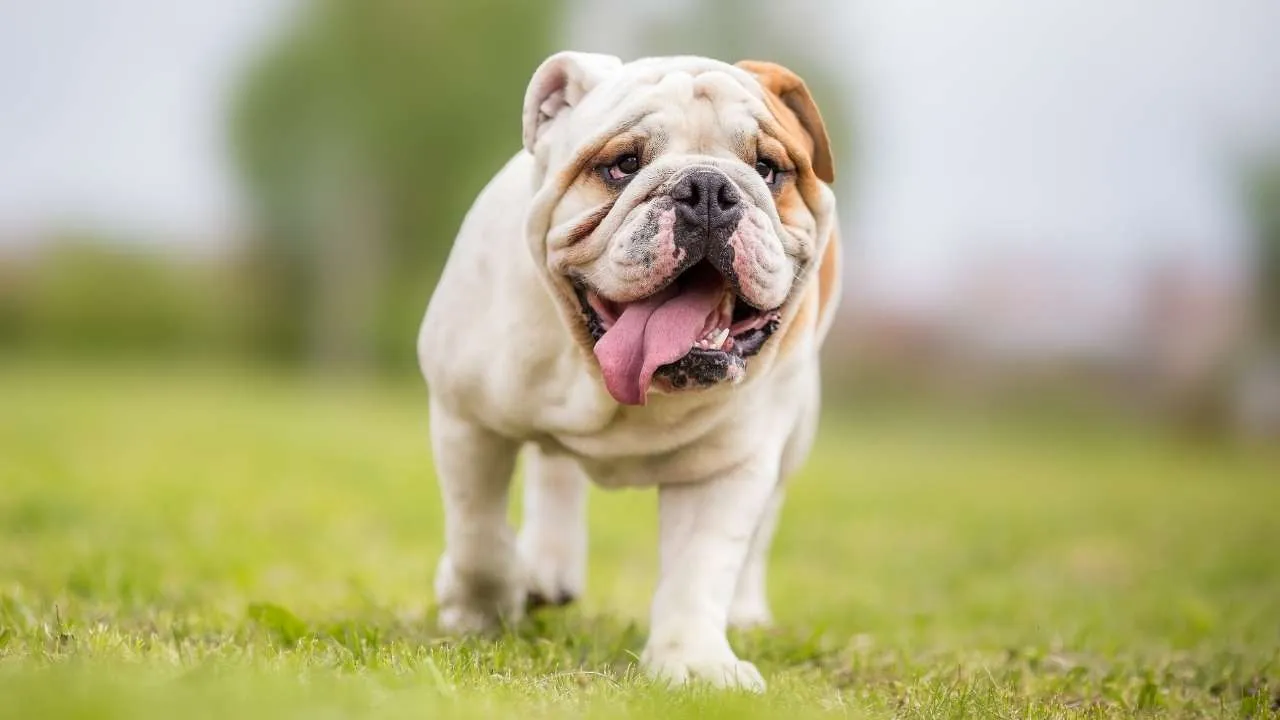
The English Bulldog may look strong and serious, but they are one of the most relaxed and loving dog breeds. They aren’t interested in guarding or chasing. Instead, they love staying close to their owners and enjoying quiet time.
As per PetMD, Bulldogs are known for being calm and steady. They prefer a slow, relaxed pace and enjoy lounging around the house. This makes them ideal for people living in apartments or quieter homes. They are affectionate and do well with children, too.
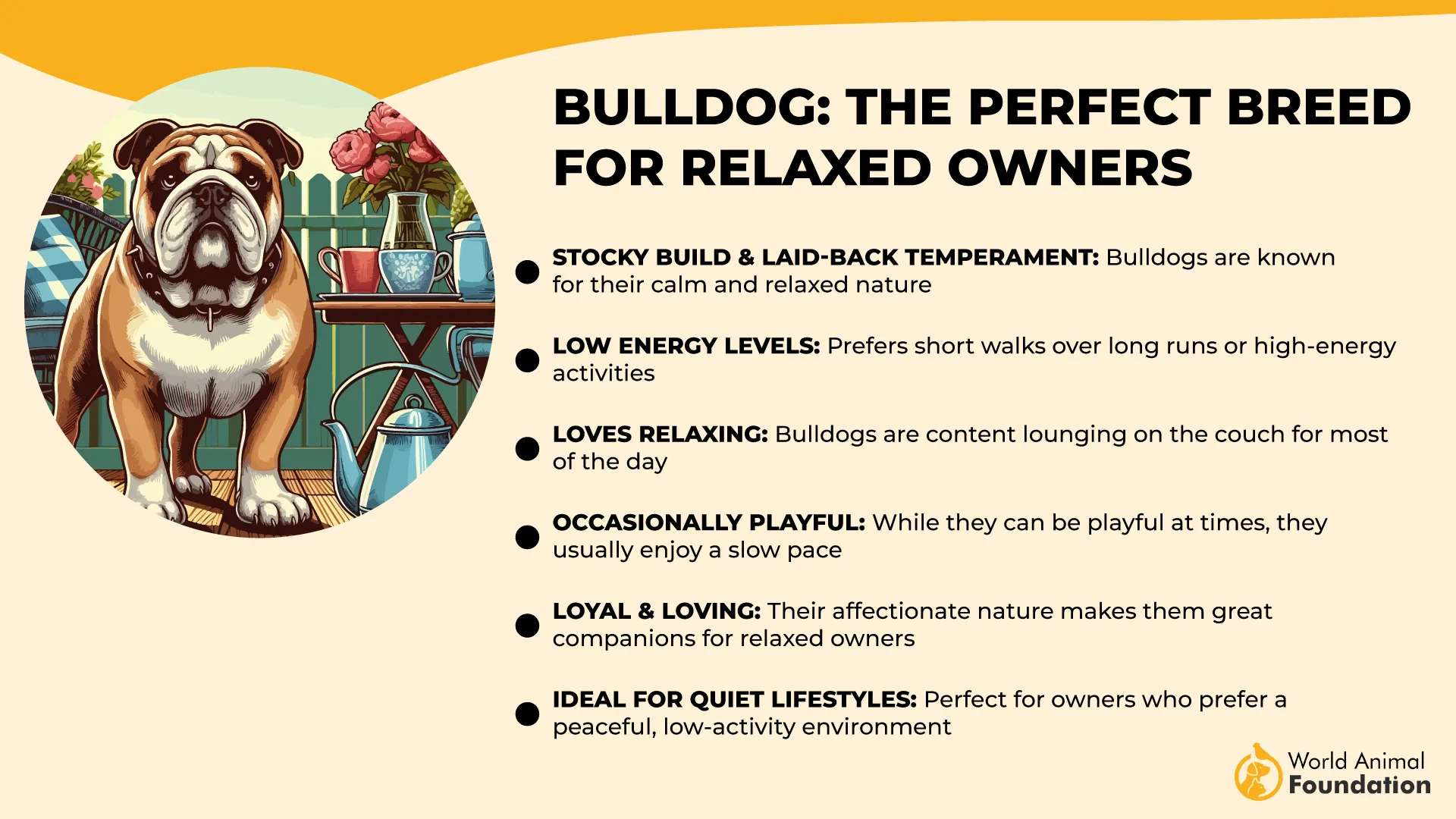
Their short, muscular bodies and wrinkled faces give them a tough look, but it’s all just appearance. Bulldogs are friendly with both family and strangers and rarely show any signs of aggression.
Training can take a little patience, but it’s very doable. Bulldogs respond best to short, positive lessons—especially when treats are involved. They enjoy routines and tend to do well when they know what to expect.
They don’t need a lot of exercise, but they do need regular care. Because of their short noses and loose skin, Bulldogs can have breathing issues and skin problems. Keeping them cool, clean, and healthy is key to a good life.
They may grunt or bark occasionally, but they aren’t alarm dogs. Their strength is in being loving, steady companions who bring comfort and calm to their families.
Fun Fact:
Bulldogs were once used in a sport called bull-baiting, but are now one of the most gentle and friendly dog breeds you can own.
5. Pug
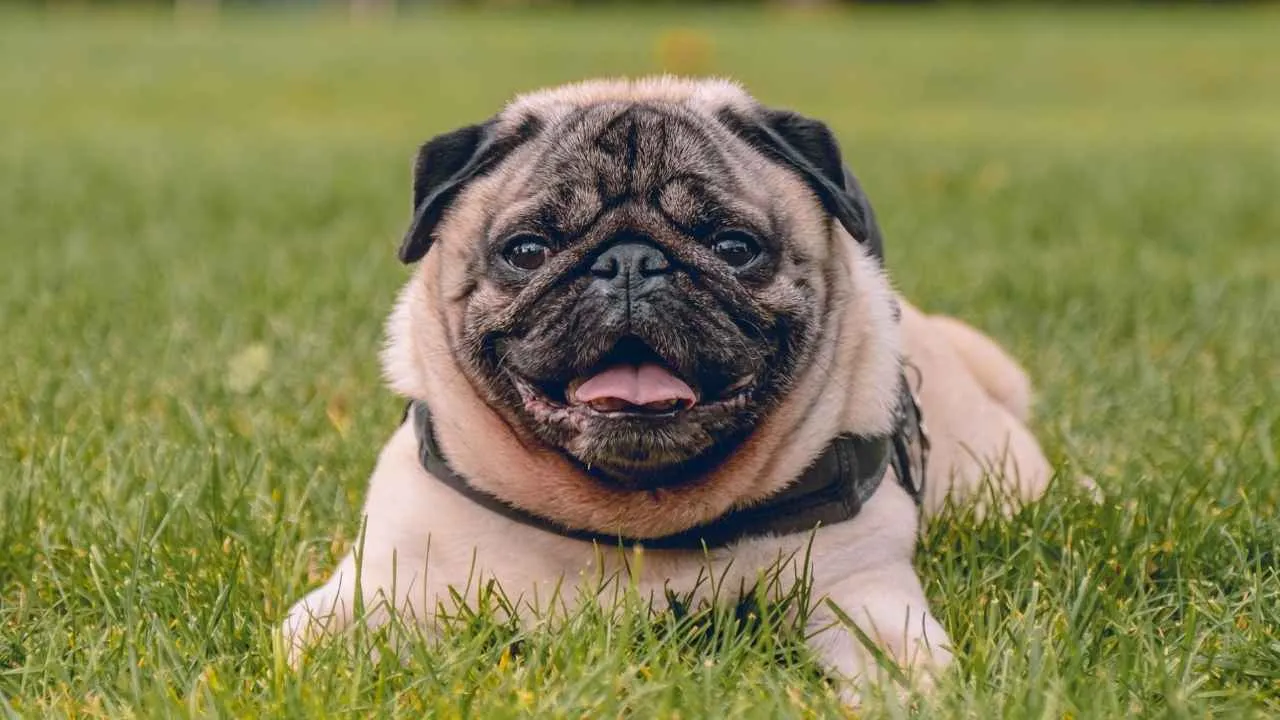
The Pug may be small in size, but it has a big heart and a playful spirit. These dogs aren’t built for guarding, and they don’t try to be. Instead, they love making people laugh, giving affection, and being part of every moment in the home.
Pugs are happiest when they’re close to their owners. They like being around people all the time and will often follow you from room to room. They don’t do well as guard dogs, but they make excellent companions, especially for those who need emotional comfort.
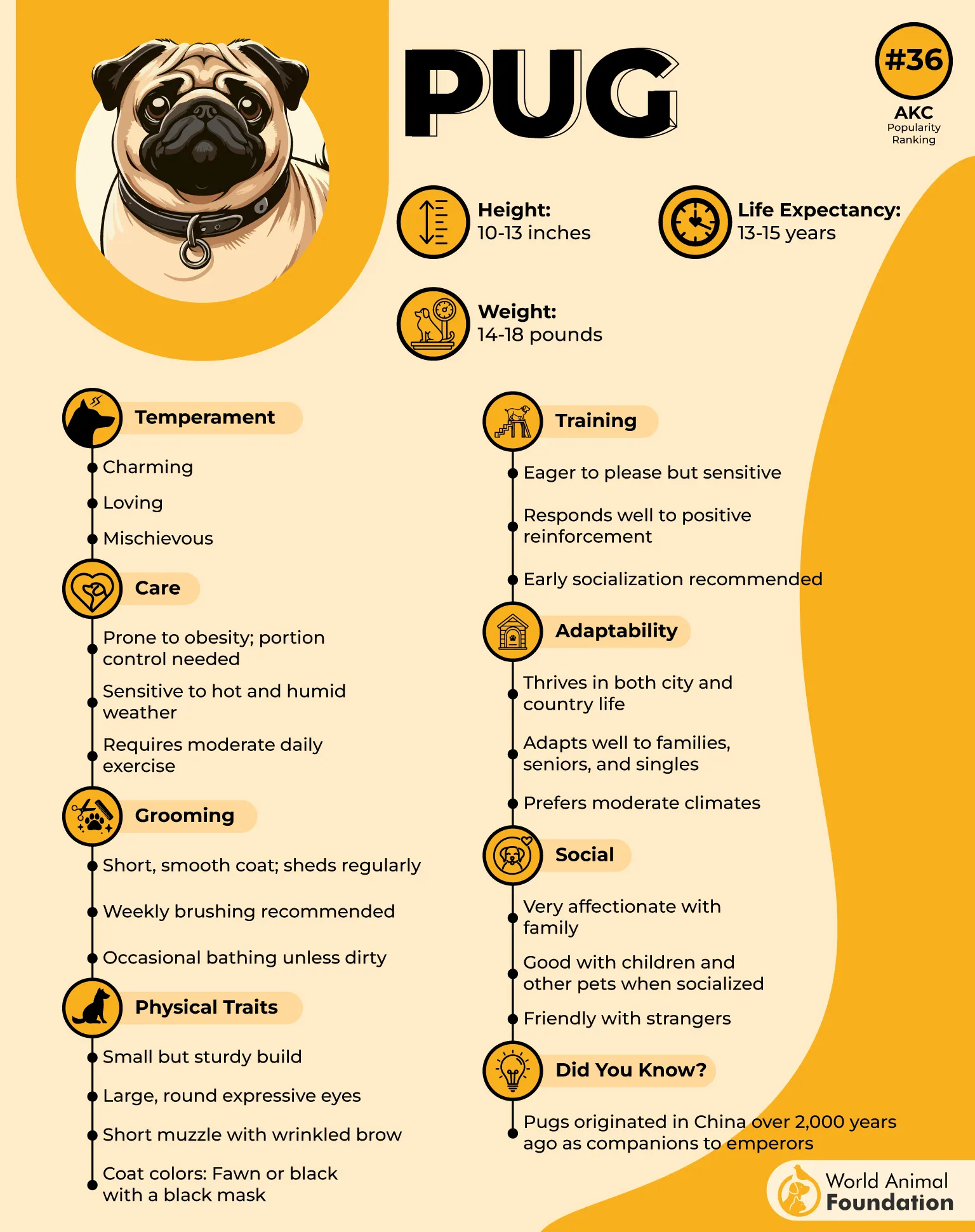
They have a very distinct look—short bodies, round faces, wrinkled skin, and large, expressive eyes. While they’re not strong or fast, their charm and loving nature more than make up for it.
Training a Pug takes patience, but they’re smart and love food, which helps a lot. Keep training short and fun, and they’ll quickly learn how to behave at home.
Pugs need some special care. Their short noses make them sensitive to heat, and their skin folds need to be cleaned regularly. They enjoy short play sessions and lots of relaxing time.
Even if they bark, it’s usually because they’re excited, not because they’re warning anyone. A Pug’s main job is to bring joy, and they do it very well.
Fun Fact:
Pugs were once royal pets in ancient China and were even guarded by soldiers in royal palaces.
6. Havanese

The Havanese is a small dog with a big personality. It was bred to be a companion, not a protector, and it fits that role perfectly. These dogs are loving, calm, and friendly with almost everyone they meet.
One of the best things about Havanese dogs is how easily they adjust to different homes. Whether you live in a small apartment or a large house, this breed fits in easily. They’re emotionally in tune and love being close to their people.

Their long, silky coats and small size give them a soft, gentle look. They aren’t built for guarding, and they don’t act like guard dogs either. Even when something surprises them, they respond calmly and kindly.
They are very smart and quick to learn. Training is usually easy, especially when it includes praise and treats. They also enjoy learning tricks and often do well in obedience or therapy programs.
Havanese dogs need daily brushing to keep their coats clean and smooth. They don’t need a lot of exercise, but they enjoy walks and playing indoors or outside.
They might bark when they hear something new, but it’s not meant to scare anyone. Their real gift is being a loving and loyal friend.
Fun Fact:
The Havanese is the national dog of Cuba and was once called the “Velcro dog” because it sticks so closely to its owner.
7. Irish Setter
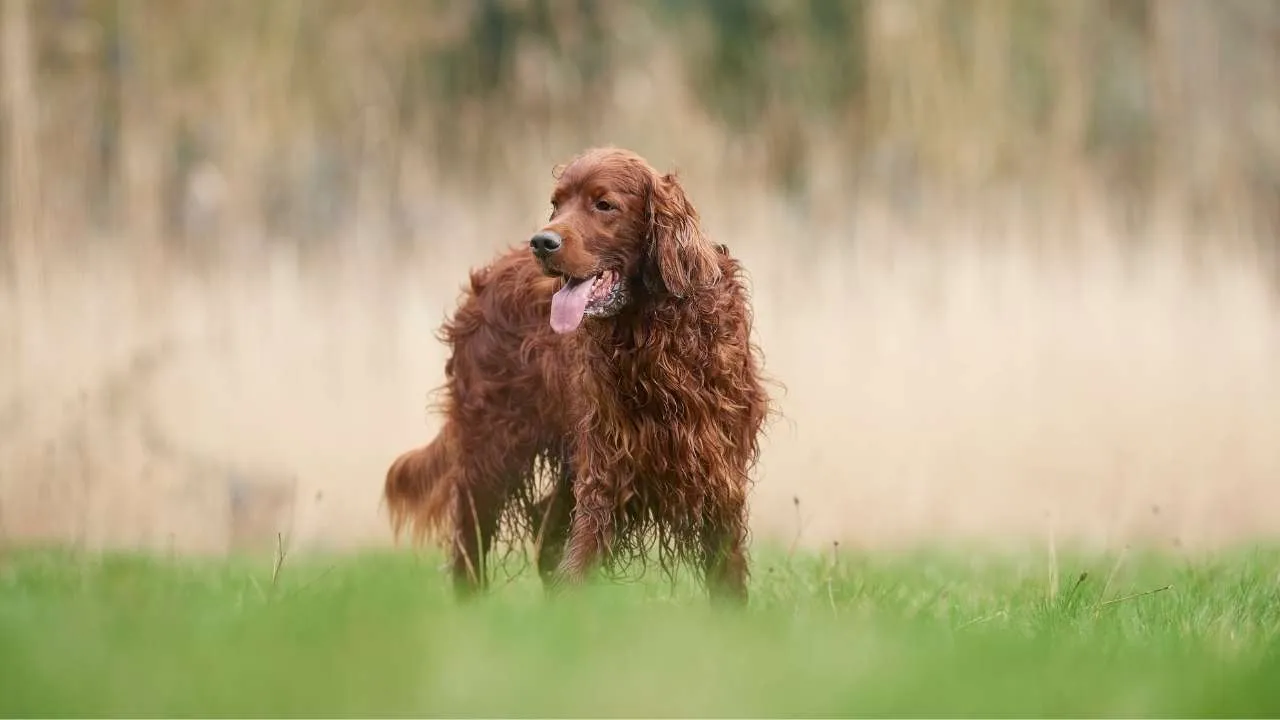
The Irish Setter is a beautiful dog with a joyful and loving nature. These dogs are known for their energy and friendliness, not for being guard dogs. They prefer fun and family time over guarding doors.
Irish Setters are cheerful and full of life. They enjoy playing, meeting new people, and being part of whatever is going on. Their kind and friendly nature makes them a great fit for busy families or people who enjoy an active lifestyle.
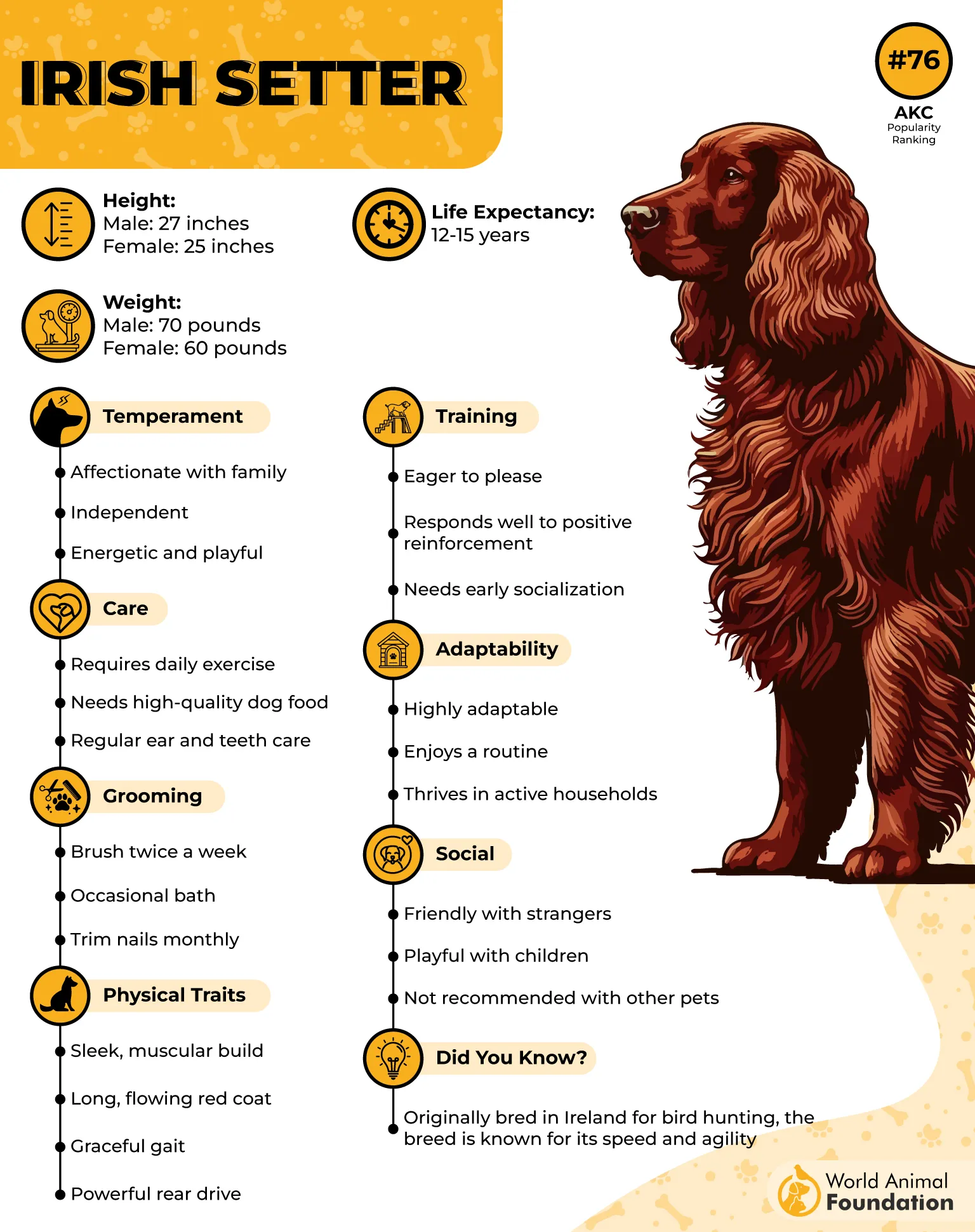
They are tall, lean, and covered in a flowing red coat that’s hard to miss. Even though they look elegant, they’re always ready for a game or a run. They rarely show aggression and are more likely to greet strangers than chase them off.
As per WebMD, they’re smart and eager to learn, especially when training is fun and rewarding. Games, running, and learning new tricks are great ways to keep them engaged and happy.
Irish Setters need daily exercise and plenty of space to move around. Brushing a few times a week helps manage their long coat and keeps them looking their best. These dogs also love company, so they don’t do well if left alone too often.
They may bark during play or excitement, but they’re not watchdogs. Their true strength is in their warmth and happy energy.
Fun Fact:
The Irish Setter was one of the first dog breeds officially recognized by the American Kennel Club in 1878.
Conclusion
While many people look for good guard dogs or excellent guard dogs to watch over their homes, not every dog needs to fill that role. Some breeds—like the ones we’ve covered in this article—bring their own value by being peaceful, loving, and easygoing companions. They might not have an instinct to protect, but they more than make up for it with warmth, charm, and the ability to fit into a wide range of households.
Unlike a large dog with strong protective instincts, these breeds are more likely to seek cuddles than confrontation. They get along well with other dogs, children, and guests, making them excellent family members in homes where calm behavior is preferred over territorial guarding.
Of course, breeds like the Pit Bull or Golden Retriever—while not typically known as great guard dogs—can still be trained to assist in various roles, including as rescue dogs or emotional support animals. With proper training, many breeds can adapt to different needs. But if your main goal is companionship over security, the non-guarding breeds listed here are among the best choices.
Choosing the right dog depends on your lifestyle and preferences. If protection is a priority, there are dogs better suited for that job. But if you’re looking for a loving presence to share your life with, a non-guarding breed may be exactly what you need.


